Your Declaration of independence nz signatories images are available in this site. Declaration of independence nz signatories are a topic that is being searched for and liked by netizens today. You can Get the Declaration of independence nz signatories files here. Find and Download all free vectors.
If you’re looking for declaration of independence nz signatories pictures information linked to the declaration of independence nz signatories topic, you have pay a visit to the right blog. Our website frequently gives you suggestions for refferencing the highest quality video and picture content, please kindly search and locate more enlightening video articles and images that match your interests.
Declaration Of Independence Nz Signatories. First signed by 34 Northern Māori rangatira chiefs on 28 October 1835 He Whakaputanga collected a further 18 signatures by 1839. Signers of the Declaration of Independence. Te Wherowhero one of the few chiefs outside Northland to sign the Declaration of Independence was also the last to do so in 1839. The United States Declaration of Independence is the pronouncement adopted by the Second Continental Congress meeting in Philadelphia Pennsylvania on July 4 1776The Declaration explained why the Thirteen Colonies at war with the Kingdom of Great Britain regarded themselves as thirteen independent sovereign states no longer under British ruleWith the Declaration these new states.
 He Whakaputanga English Story Digitalnz From digitalnz.org
He Whakaputanga English Story Digitalnz From digitalnz.org
Signatories to the declaration. Signatures continued to be added until 1839 by which time it had 52 signatures. He Whakaputanga o te Rangatiratanga o Nu Tireni known in English as the Declaration of Independence of the United Tribes of New Zealand is a constitutional document of historical and cultural significance. First signed by 34 Northern Māori rangatira chiefs on 28 October 1835 He Whakaputanga collected a further 18 signatures by 1839. Te Wherowhero a chief of Waikato is depicted sitting by a log. On 28 October 1835 at the home of British Resident James Busby in Waitangi 34 northern chiefs signed He Whakaputanga o te Rangatiratanga o Nu Tireni known in English as the Declaration of Independence of the United Tribes of New Zealand.
Te Wherowhero one of the few chiefs outside Northland to sign the Declaration of Independence was also the last to do so in 1839.
Te Hāpuku 2nd of 2 This photograph of Te Hāpuku was taken by James Wrigglesworth in the 1860s. It document provided a portal for the Treaty of Waitangi negotiations. Signatories to the declaration. It is inseparable from the Treaty of Waitangi and the issues that shape Aotearoa New Zealand. This declaration states the sovereignty Te mana i te whenua that existed in 1835 and was designed to promote and protect the rights of Māori. As Pōtatau Te Wherowhero he.
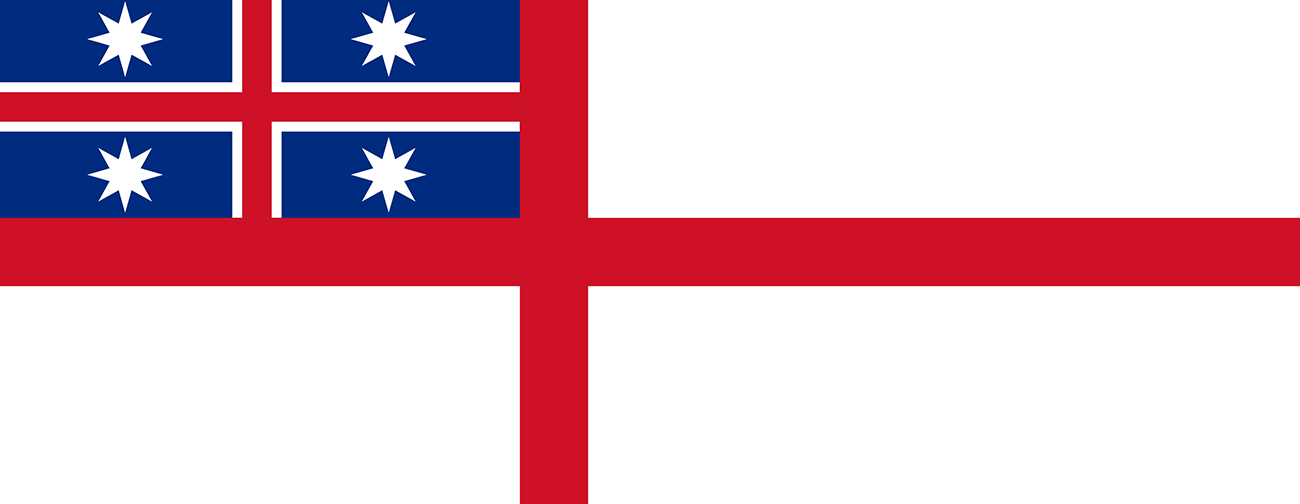 Source: hrc.co.nz
Source: hrc.co.nz
The previous year many of these chiefs had gathered to choose a national flag to fly on locally. Te Wherowhero a chief of Waikato is depicted sitting by a log. This is the Māori text of the Declaration of Independence which was initially signed by 34 northern chiefs. The previous year many of these chiefs had gathered to choose a national flag to fly on locally. Also shown are Te Waru centre and Te Pakaru far right.
 Source: digitalnz.org
Source: digitalnz.org
Te Wherowhero a chief of Waikato is depicted sitting by a log. The important Ngāti Kahungunu chief was the second-to-last signatory of the Declaration of Independence. Download this Information in PDF Format. He Whakaputanga o te Rangatiratanga o Nu Tireni known in English as the Declaration of Independence of the United Tribes of New Zealand is a constitutional document of historical and cultural significance. Recognised by King William IV it declared New Zealands independence as a sovereign nation under the Māori chiefs.
 Source: natlib.govt.nz
Source: natlib.govt.nz
Who were the rangatira who signed He Whakaputanga. Also shown are Te Waru centre and Te Pakaru far right. Who were the rangatira who signed He Whakaputanga. Te Hāpuku 2nd of 2 This photograph of Te Hāpuku was taken by James Wrigglesworth in the 1860s. Mokas name but not his signature also appears on the 1840 Treaty of.
 Source: wikiwand.com
Source: wikiwand.com
Te Wherowhero one of the few chiefs outside Northland to sign the Declaration of Independence was also the last to do so in 1839. It is inseparable from the Treaty of Waitangi and the issues that shape Aotearoa New Zealand. These included the signature of Te Wherowhero the chief of Waikato who would later become the first Māori king. The United States Declaration of Independence is the pronouncement adopted by the Second Continental Congress meeting in Philadelphia Pennsylvania on July 4 1776The Declaration explained why the Thirteen Colonies at war with the Kingdom of Great Britain regarded themselves as thirteen independent sovereign states no longer under British ruleWith the Declaration these new states. Te Wherowhero a chief of Waikato is depicted sitting by a log.
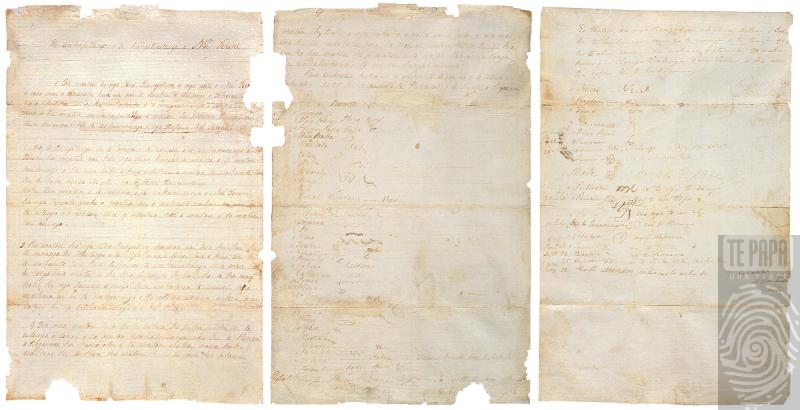 Source: hrc.co.nz
Source: hrc.co.nz
Download this Information in PDF Format. This is the original copy of the New Zealand Declaration of Independence and is entitled He whakaputanga o te Rangatiratanga o Nu Tireni It was signed at Waitangi on 28 October 1835. He Whakaputanga o te Rangatiratanga o Nu Tireni - known in English as the Declaration of Independence of the United Tribes of New Zealand Recognised by the United Kingdom signalled the emergence of Māori authority on the world stage. Signers of the Declaration of Independence. As Pōtatau Te Wherowhero he.
 Source: waikato.ac.nz
Source: waikato.ac.nz
Recognised by King William IV it declared New Zealands independence as a sovereign nation under the Māori chiefs. First signed by 34 Northern Māori rangatira chiefs on 28 October 1835 He Whakaputanga collected a further 18 signatures by 1839. Who were the rangatira who signed He Whakaputanga. Te Wherowhero one of the few chiefs outside Northland to sign the Declaration of Independence was also the last to do so in 1839. Signatories to the declaration.
 Source: natlib.govt.nz
Source: natlib.govt.nz
This declaration states the sovereignty Te mana i te whenua that existed in 1835 and was designed to promote and protect the rights of Māori. He Whakaputanga o te Rangatiratanga o Nu Tireni - known in English as the Declaration of Independence of the United Tribes of New Zealand Recognised by the United Kingdom signalled the emergence of Māori authority on the world stage. Signatures continued to be added until 1839 by which time it had 52 signatures. As Pōtatau Te Wherowhero he. A Nga Puhi leader Moka Te Kainga-mataa was an original signatory of the 1835 Declaration of Independence.
 Source: nzgeo.com
Source: nzgeo.com
The declaration was signed in 1835 by 35 Rangatira maori leaders and four British Residents. Who were the rangatira who signed He Whakaputanga. There was also an English translation made of the declaration but only the Māori version was signed. This is the Māori text of the Declaration of Independence which was initially signed by 34 northern chiefs. This is the original copy of the New Zealand Declaration of Independence and is entitled He whakaputanga o te Rangatiratanga o Nu Tireni It was signed at Waitangi on 28 October 1835.
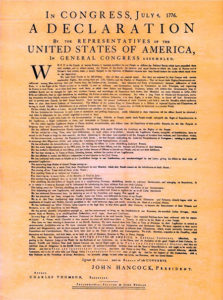 Source: kaneworks.com
Source: kaneworks.com
Recognised by King William IV it declared New Zealands independence as a sovereign nation under the Māori chiefs. This is the Māori text of the Declaration of Independence which was initially signed by 34 northern chiefs. He Whakaputanga o te Rangatiratanga o Nu Tireni - known in English as the Declaration of Independence of the United Tribes of New Zealand Recognised by the United Kingdom signalled the emergence of Māori authority on the world stage. Te Wherowhero one of the few chiefs outside Northland to sign the Declaration of Independence was also the last to do so in 1839. Who were the rangatira who signed He Whakaputanga.
 Source: pinterest.com
Source: pinterest.com
Te Wherowhero one of the few chiefs outside Northland to sign the Declaration of Independence was also the last to do so in 1839. These included the signature of Te Wherowhero the chief of Waikato who would later become the first Māori king. Download this Information in PDF Format. Recognised by King William IV it declared New Zealands independence as a sovereign nation under the Māori chiefs. This is the Māori text of the Declaration of Independence which was initially signed by 34 northern chiefs.
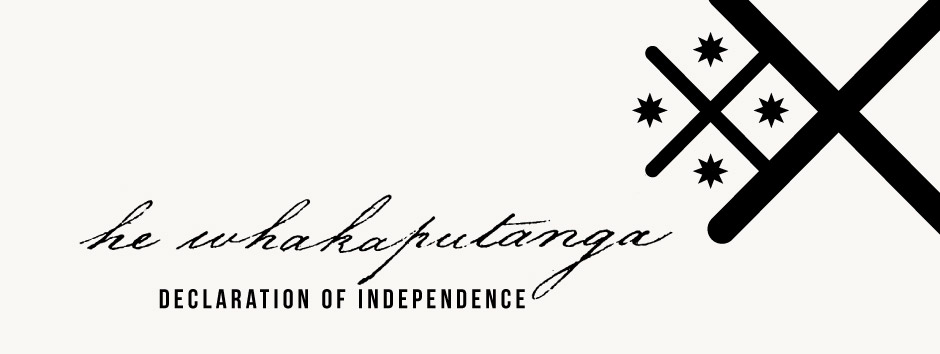 Source: nzhistory.govt.nz
Source: nzhistory.govt.nz
As Pōtatau Te Wherowhero he. The previous year many of these chiefs had gathered to choose a national flag to fly on locally. Also shown are Te Waru centre and Te Pakaru far right. There was also an English translation made of the declaration but only the Māori version was signed. Signatories to the declaration.
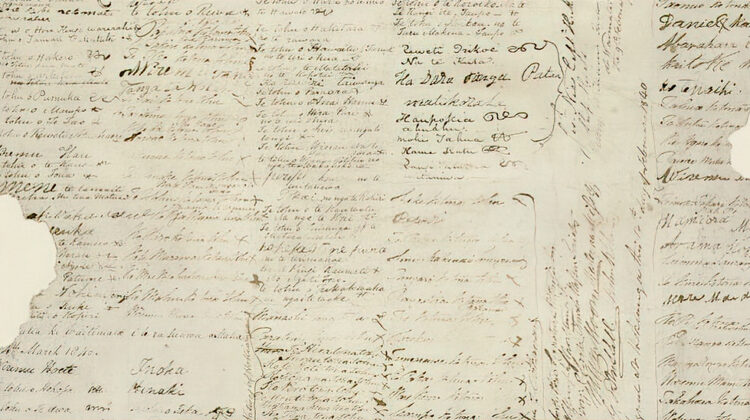 Source: eatdrinktravel.co.nz
Source: eatdrinktravel.co.nz
It is inseparable from the Treaty of Waitangi and the issues that shape Aotearoa New Zealand. It document provided a portal for the Treaty of Waitangi negotiations. The United States Declaration of Independence is the pronouncement adopted by the Second Continental Congress meeting in Philadelphia Pennsylvania on July 4 1776The Declaration explained why the Thirteen Colonies at war with the Kingdom of Great Britain regarded themselves as thirteen independent sovereign states no longer under British ruleWith the Declaration these new states. Described by British Resident James Busby as the Magna Carta of New Zealand Independence He Whakaputanga was a bold and innovative declaration of Indigenous power. Also shown are Te Waru centre and Te Pakaru far right.
 Source: wikiwand.com
Source: wikiwand.com
Te Wherowhero a chief of Waikato is depicted sitting by a log. This declaration states the sovereignty Te mana i te whenua that existed in 1835 and was designed to promote and protect the rights of Māori. Signatories to the declaration. He Whakaputanga o te Rangatiratanga o Nu Tireni known in English as the Declaration of Independence of the United Tribes of New Zealand is a constitutional document of historical and cultural significance. Under the declaration the United Tribes of New Zealand te whakaminenga o ngā hapū o Nu Tireni.
 Source: unitedkingdomofnewzealand.co.uk
Source: unitedkingdomofnewzealand.co.uk
Download this Information in PDF Format. Te Hāpuku 2nd of 2 This photograph of Te Hāpuku was taken by James Wrigglesworth in the 1860s. As Pōtatau Te Wherowhero he. Described by British Resident James Busby as the Magna Carta of New Zealand Independence He Whakaputanga was a bold and innovative declaration of Indigenous power. It document provided a portal for the Treaty of Waitangi negotiations.
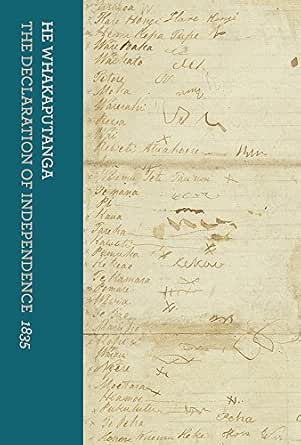 Source: amazon.com
Source: amazon.com
Signatures continued to be added until 1839 by which time it had 52 signatures. Described by British Resident James Busby as the Magna Carta of New Zealand Independence He Whakaputanga was a bold and innovative declaration of Indigenous power. It document provided a portal for the Treaty of Waitangi negotiations. This declaration states the sovereignty Te mana i te whenua that existed in 1835 and was designed to promote and protect the rights of Māori. It is inseparable from the Treaty of Waitangi and the issues that shape Aotearoa New Zealand.
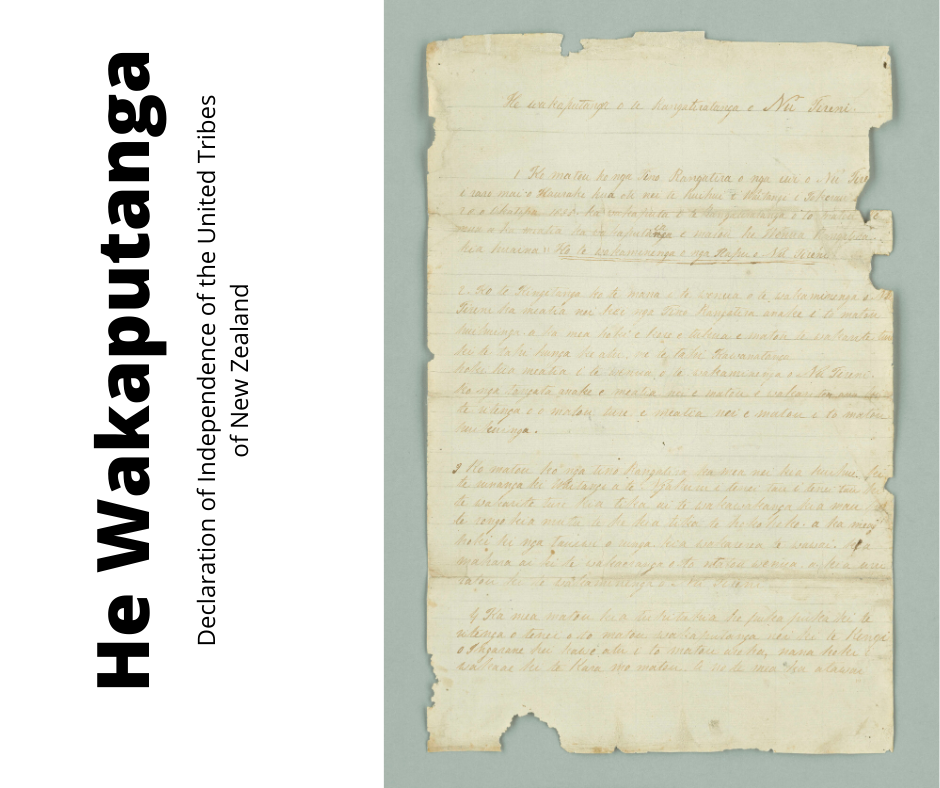 Source: nwo.org.nz
Source: nwo.org.nz
These included the signature of Te Wherowhero the chief of Waikato who would later become the first Māori king. Recognised by King William IV it declared New Zealands independence as a sovereign nation under the Māori chiefs. By 1839 more than 50 chiefs had signed the declaration. Signatures continued to be added until 1839 by which time it had 52 signatures. This declaration states the sovereignty Te mana i te whenua that existed in 1835 and was designed to promote and protect the rights of Māori.
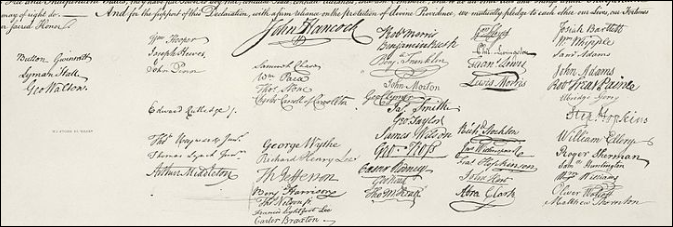 Source: contractlogix.com
Source: contractlogix.com
Signers of the Declaration of Independence. Te Wherowhero one of the few chiefs outside Northland to sign the Declaration of Independence was also the last to do so in 1839. A Nga Puhi leader Moka Te Kainga-mataa was an original signatory of the 1835 Declaration of Independence. Signatories to the declaration. The previous year many of these chiefs had gathered to choose a national flag to fly on locally.
 Source: waitangi.org.nz
Source: waitangi.org.nz
The United States Declaration of Independence is the pronouncement adopted by the Second Continental Congress meeting in Philadelphia Pennsylvania on July 4 1776The Declaration explained why the Thirteen Colonies at war with the Kingdom of Great Britain regarded themselves as thirteen independent sovereign states no longer under British ruleWith the Declaration these new states. On 28 October 1835 at the home of British Resident James Busby in Waitangi 34 northern chiefs signed He Whakaputanga o te Rangatiratanga o Nu Tireni known in English as the Declaration of Independence of the United Tribes of New Zealand. Also shown are Te Waru centre and Te Pakaru far right. He Whakaputanga o te Rangatiratanga o Nu Tireni known in English as the Declaration of Independence of the United Tribes of New Zealand is a constitutional document of historical and cultural significance. Download this Information in PDF Format.
This site is an open community for users to do submittion their favorite wallpapers on the internet, all images or pictures in this website are for personal wallpaper use only, it is stricly prohibited to use this wallpaper for commercial purposes, if you are the author and find this image is shared without your permission, please kindly raise a DMCA report to Us.
If you find this site serviceableness, please support us by sharing this posts to your preference social media accounts like Facebook, Instagram and so on or you can also bookmark this blog page with the title declaration of independence nz signatories by using Ctrl + D for devices a laptop with a Windows operating system or Command + D for laptops with an Apple operating system. If you use a smartphone, you can also use the drawer menu of the browser you are using. Whether it’s a Windows, Mac, iOS or Android operating system, you will still be able to bookmark this website.






